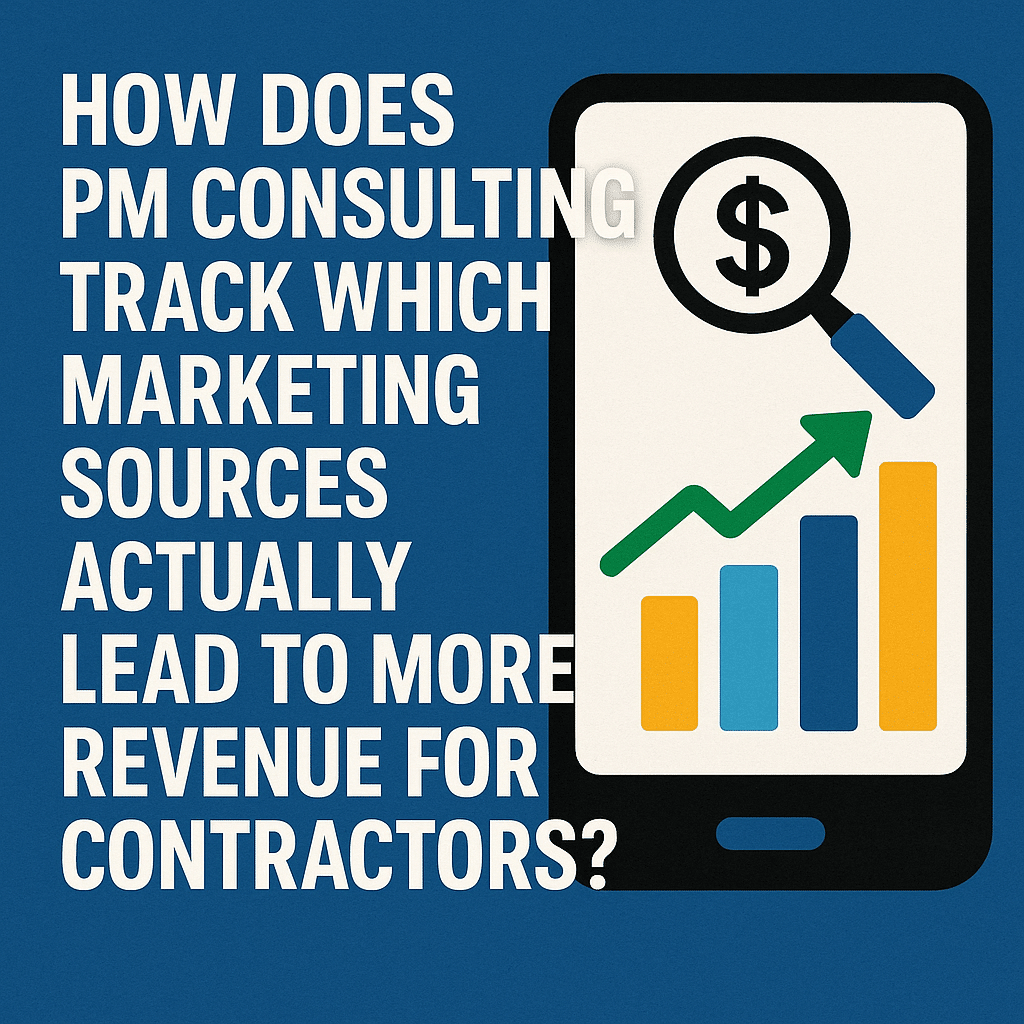Complete SEO Audit Guide for Contractor Websites
In the competitive landscape of online visibility, contractor websites must prioritize a comprehensive SEO audit to thrive. Partnering with a seasoned general contractor SEO company enhances a customer‘s ability to rank prominently on search engines. Essential aspects such as effective content audits and optimized landing pages play a pivotal role in attracting potential clients and retaining them. To achieve success, contractors need to understand the various components of a detailed SEO audit process. Keep reading to explore an essential checklist and tools needed to elevate your contractor website’s performance.
Key Takeaways
- conducting an SEO audit improves brand awareness and online visibility for contractors
- optimizing website structure enhances user experience and crawls efficiency for better rankings
- local SEO strategies are essential for attracting clients within specific geographic areas
- analyzing content quality ensures relevance and user engagement, driving more targeted traffic
- effective use of free SEO tools aids contractors in identifying areas for improvement
Essential SEO Audit Checklist for Contractor Websites

Understanding the intricacies of search engine optimization is vital for contractor websites looking to improve brand awareness and minimize risk. An essential SEO audit checklist can serve as a foundation for achieving this goal. It begins with identifying on-page SEO issues that could hinder search visibility, followed by an analysis of the website’s structure to ensure efficiency in crawling and indexing. Assessing mobile-friendliness and loading speed is next, as these factors significantly impact user experience and engagement. Additionally, reviewing local SEO practices and optimizing the Google My Business listing plays a critical role for contractors aiming to attract clients in their geographic area. Evaluating the quality and relevance of content ensures it meets user intent, while assessing the backlink profile helps establish authority in the competitive landscape. Finally, implementing transport layer security protocols not only protects user data but also enhances trustworthiness, further strengthening the website’s position against competitor analysis.
Identify on-Page SEO Issues
Identifying on-page SEO issues is a critical step for enhancing the credibility of contractor websites. By paying attention to essential elements such as title tags, meta descriptions, and header tags, contractors can ensure their content aligns with local search intent, ultimately increasing visibility. Moreover, addressing any discrepancies in contract-related keywords and company policies within the site fosters a more trustworthy experience for users, which is vital in a competitive online marketplace.
Analyze Website Structure for SEO Efficiency
Analyzing website structure is a vital component of the SEO audit process for contractor websites. A well-organized site not only enhances user experience but also improves search engine indexing by establishing a clear hierarchy of information. Implementing XML sitemaps and effective anchor text within the site’s content ensures that the marketing strategy aligns with the needs and preferences of the target audience, facilitating better visibility in search results.
| Website Structure Element | Importance for SEO | Impact on Target Audience |
|---|---|---|
| Hierarchy of Information | Improves crawling efficiency | Enables easy navigation |
| XML Sitemaps | Assists in indexing pages | Enhances visibility in search engines |
| Anchor Text | Provides context to users and search engines | Facilitates relevant internal linking |
By ensuring that these elements are optimized, contractors can effectively enhance their online presence and better connect with potential clients in their service areas.
Check Mobile-Friendliness and Loading Speed
Ensuring mobile-friendliness and optimal loading speed are crucial for contractor websites to enhance user experience and engagement. A responsive design accommodates users accessing the site from various devices, while fast loading times reduce the risk of potential customers abandoning the page due to frustration with slow performance. Furthermore, addressing issues like cache management can help optimize site speed, allowing contractors to effectively communicate FAQs and price details, creating a seamless experience for both online and offline inquiries.
Review Local SEO and Google My Business Listing
Reviewing local SEO strategies and optimizing the Google My Business listing are fundamental best practices for contractors aiming to enhance their online visibility. This includes maintaining accurate business information, such as the name, address, and phone number (NAP), along with a well-crafted description that highlights services offered. Utilizing hreflang tags can also aid in targeting different regions, ensuring content relevance above the fold for users searching locally.
Furthermore, leveraging analytics from a general contractor seo company provides valuable insights into customer behavior, helping contractors identify the effectiveness of their local SEO efforts and make necessary adjustments. Regularly updating images and posts within the Google My Business profile fosters engagement and showcases the business’s dynamism and relevance in a competitive market.
| Local SEO Element | Best Practice | Impact on Visibility |
|---|---|---|
| Business Information | Ensure consistency across all platforms | Enhances local search rankings |
| Description | Craft a compelling narrative | Improves user engagement |
| Hreflang Tags | Implement for regional targeting | Increases relevance for local clients |
Evaluate Content Quality and Relevance
Evaluating content quality and relevance is a vital aspect of the SEO audit checklist for contractor websites. High-quality content not only enhances usability but also improves navigation for users seeking specific services within a competitive landscape. Furthermore, ensuring that metadata accurately reflects the content aids search engines in understanding the context, ultimately driving more targeted traffic to the site.
Assess Backlink Profile and Authority
Assessing the backlink profile and authority of a contractor’s website is essential for improving search engine rankings and user engagement. A robust link-building strategy can significantly lower the bounce rate by directing engaged visitors who are interested in high-quality content. Researching the backlink sources and ensuring they align with relevant industry standards helps avoid issues associated with duplicate content, enhancing overall site credibility.
| Element | Importance | Impact on Web Presence |
|---|---|---|
| Backlink Quality | Indicates site authority | Boosts search engine rankings |
| Link Building Strategy | Enhances content marketing efforts | Increases referral traffic |
| Diversification of Links | Reduces risk of penalties | Ensures long-term stability |
With a solid understanding of what to include in an SEO audit, contractors can take their online presence to new heights. Now, let’s explore the best tools that can simplify this process and maximize results for contractor websites.
Best Tools for Conducting SEO Audits on Contractor Websites

Utilizing the right tools is paramount for conducting an effective SEO audit on contractor websites. Google Analytics and Search Console serve as foundational instruments for tracking website performance, offering insights into traffic sources and user behavior. Coupling these with keyword research and analysis tools allows contractors to optimize their content strategy, ensuring effective targeting of relevant keywords. Additionally, technical SEO scanning tools identify structural and performance issues that could hinder search engine indexing. Competitor analysis software enables contractors to gauge their market position, revealing opportunities for differentiation. Lastly, backlink and domain authority checkers provide critical data to strengthen citation efforts and build a more authoritative online presence. By integrating these tools into their SEO strategy, contractors can enhance their visibility and engagement in a competitive landscape.
Google Analytics and Search Console Setup
Setting up Google Analytics and Search Console is crucial for contractors aiming to optimize their websites effectively. Google Analytics provides insights into website traffic and user behavior across various devices, including mobile devices, allowing contractors to analyze engagement more precisely. Meanwhile, Search Console helps identify indexing issues and monitor site performance, ensuring that there is no spamming and that the site’s configuration, including CSS, is optimized for a seamless user experience.
Contractors can monitor their online presence and prepare effective strategies for using social media by integrating these tools into their digital marketing efforts:
| Tool | Purpose | Benefits |
|---|---|---|
| Google Analytics | Track website traffic | Understand user behavior and optimize content |
| Google Search Console | Monitor website performance | Identify indexing issues and improve visibility |
| CSS Audits | Assess website styling | Ensure mobile responsiveness and enhance aesthetics |
Keyword Research and Analysis Tools
Keyword research and analysis tools are indispensable for contractors aiming to enhance their online visibility. They provide crucial statistics on search trends, helping users understand how algorithms prioritize specific terms related to their services. Furthermore, these tools evaluate the accessibility of content by analyzing various HTML elements, ensuring that keywords are effectively placed to increase search engine rankings.
| Tool | Purpose | Key Feature |
|---|---|---|
| Google Keyword Planner | Identify trending keywords | Ad performance insights |
| Ahrefs | Analyze keyword difficulty | Competitor keyword analysis |
| SEMrush | Track search engine rankings | Comprehensive statistics dashboard |
Technical SEO Scanning Tools
Technical SEO scanning tools are essential for contractors striving to enhance their online brand presence and improve user experience across their websites. These tools meticulously evaluate key aspects such as page load speed, mobile optimization, and URL structure, impacting how effectively a site ranks for relevant keywords in organic search results. By identifying and resolving technical issues, contractors can boost their site’s performance, potentially leading to increased employment opportunities as they attract more organic traffic and engage a broader audience.
Competitor Analysis Software
Competitor analysis software, such as SEMrush, empowers contractors to gain valuable insights into their market standing. By examining competitors’ web pages and evaluating their use of anchor text, contractors can identify opportunities for improving their own SEO strategies. Additionally, analyzing readability metrics allows contractors to refine content quality, ultimately attracting a more engaged audience and enhancing their overall online visibility.
Backlink and Domain Authority Checkers
Backlink and domain authority checkers play a pivotal role in establishing a contractor’s online credibility. By analyzing the quality and quantity of backlinks directed to a site, contractors can identify opportunities for keyword research that enhance their web design and overall content strategy. Furthermore, these tools ensure that the contractor’s Google Business Profile remains competitive, helping them attract local clients more effectively.
Equipped with the right tools, contractors can uncover valuable insights to enhance their online presence. Now, let’s dive into a step-by-step guide for performing a light website audit that will elevate your site’s performance.
Step-by-Step Guide to Performing a Light Website Audit

Conducting a light website audit offers a practical approach for contractors aiming to enhance their online presence without extensive time investment. It begins with quick checks for on-page SEO factors, ensuring that essential elements such as title tags and meta descriptions are optimized to align with search intent. Following this, analyzing content performance through metrics will highlight where improvements can be made, fostering a more engaging user experience. A basic technical SEO evaluation assesses the site’s structural integrity, focusing on aspects such as load speed and mobile compatibility. Lastly, an overview of local SEO standings provides insights into how effectively the contractor’s business is positioned within the local market, identifying areas for improvement in visibility and engagement.
Quick Checks for on-Page SEO Factors
Conducting quick checks for on-page SEO factors is essential for assessing the immediate effectiveness of a contractor’s website. This involves reviewing title tags to ensure they are descriptive and contain relevant keywords, as well as confirming that meta descriptions are compelling enough to encourage user clicks. Additionally, header tags should be appropriately structured to enhance readability and assist search engines in understanding the content hierarchy, thus improving overall search visibility.
Simple Ways to Analyze Content Performance
Analyzing content performance effectively involves monitoring key metrics such as page views, bounce rates, and average session duration. These metrics provide valuable insights into how users interact with the content and highlight areas that require improvement. By leveraging tools like Google Analytics, contractors can gather data to assess which pieces of content resonate most with their audience, allowing for strategic optimizations and enhanced engagement.
Basic Technical SEO Evaluation
A basic technical SEO evaluation plays a pivotal role in identifying issues that may impede a contractor website’s performance. By assessing key factors such as URL structure, page speed, and mobile responsiveness, contractors can pinpoint specific areas that may require adjustments to enhance usability. This targeted analysis not only improves search engine rankings but also significantly enriches the overall user experience, leading to increased engagement and potential conversions.
Overview of Local SEO Standings
Assessing local SEO standings requires contractors to evaluate their presence within their specific market. This involves analyzing how well their business appears in local search results and determining the effectiveness of their geographical keywords. By identifying local competitors and their strategies, contractors can uncover opportunities to enhance their visibility in the community.
- Evaluate business listings on key platforms.
- Analyze local keyword performance.
- Monitor competitor presence and strategies.
- Check online reviews and ratings.
- Review engagement on local social media platforms.
Now that the fundamentals of a light website audit are clear, it’s time to dive deeper. An in-depth SEO content audit for contractor websites will elevate your site’s performance and visibility to new heights.
In-Depth SEO Content Audit for Contractor Websites

Conducting an in-depth SEO content audit for contractor websites necessitates a systematic approach that begins with cataloging all website content. This comprehensive inventory allows for a thorough assessment of each piece against established SEO best practices, ensuring that every element contributes effectively to overall search visibility. Additionally, identifying gaps and opportunities within the existing content serves to highlight areas where enhancements can be made, fostering a more targeted alignment with audience needs. By developing a strategic plan to improve content visibility and engagement, contractors can effectively position themselves as authoritative sources in their industry while simultaneously driving higher levels of traffic and interaction on their websites.
Cataloging All Website Content
Cataloging all website content is a foundational step in conducting a thorough SEO audit for contractor websites. This process involves creating a comprehensive inventory that includes every page, blog post, and media file, allowing contractors to assess the current state of their content strategy. By identifying each piece, contractors can evaluate its performance, relevance, and alignment with targeted keywords and user intent.
The content inventory should encapsulate various details such as publish dates, content types, view counts, and engagement metrics to facilitate informed decision-making. By doing this, contractors can pinpoint assets that require optimization or updating, ensuring that their content remains competitive in search engine rankings. This systematic approach offers insight into content gaps, ultimately guiding future content creation efforts:
| Content Element | Description | Importance |
|---|---|---|
| Page Title | Descriptive title of the content | Influences click-through rates |
| Publish Date | Date the content was published | Affects relevance and freshness |
| View Count | Number of times the content has been viewed | Indicates popularity and user interest |
| Engagement Metrics | Data on user interactions (likes, shares, comments) | Reflects content effectiveness |
Assessing Content for SEO Best Practices
Assessing content for SEO best practices requires a systematic evaluation of how well existing materials align with search engine optimization standards. This includes scrutinizing keyword relevance, ensuring that target phrases are integrated naturally within content, without keyword stuffing. Additionally, analyzing the structure, readability, and overall quality of the content enhances user engagement and helps improve visibility in search rankings.
Identifying Gaps and Opportunities in Content
Identifying gaps and opportunities in content plays a pivotal role in enhancing the effectiveness of contractor websites. Analyzing existing materials allows contractors to pinpoint areas lacking comprehensive information or services that are insufficiently addressed. This targeted approach not only informs future content creation but also aligns efforts with user needs, thereby establishing the contractor as a knowledgeable authority in their industry.
Strategy for Improving Content Visibility and Engagement
Improving content visibility and engagement on contractor websites requires a focused strategy that involves both optimizing existing content and creating new, high-quality materials that resonate with target audiences. Contractors can enhance their digital presence by utilizing well-researched keywords relevant to their services and integrating them seamlessly into informative articles, blog posts, and service descriptions. Additionally, actively promoting content through social media channels and partnerships can drive more traffic and encourage user interaction, ultimately establishing the contractor as a trusted authority in their field.
Unlock the next level of your website’s performance by delving into the intricate details of technical SEO. This essential process will empower contractors to optimize their online presence and outshine the competition.
Detailed Technical SEO Website Audit Process

Focusing on advanced technical checks is essential for maintaining the health of contractor websites. This process includes a critical examination of site architecture to improve crawlability, ensuring search engine bots can access and index content effectively. Evaluating HTTPS status and enhancing website security further bolsters user trust while contributing to search engine rankings. Additionally, implementing page speed optimization techniques is crucial, as faster loading times significantly improve user experience, reduce bounce rates, and ultimately contribute to better visibility in search results. Together, these elements create a robust foundation for a successful online presence in an increasingly competitive digital landscape.
Advanced Technical Checks for Website Health
Conducting advanced technical checks is imperative for ensuring the health of contractor websites. A thorough review of site architecture not only enhances crawlability but also increases the likelihood that search engines will effectively index essential content. Furthermore, evaluating the proper implementation of redirects and canonical tags ensures that the website maintains authority and relevance, helping to avoid potential penalties from search engines.
Site Architecture and Crawlability Improvements
Enhancing site architecture is fundamental for improving crawlability on contractor websites. A logical structure assists search engine bots in navigating the site efficiently, ensuring all pages are indexed accurately. This process involves organizing content hierarchically and eliminating unnecessary redirects to streamline the flow of information.
Another critical aspect involves regularly checking for broken links and correcting them, as these can hinder both user experience and search engine efficacy. By ensuring that each page is easily accessible, contractors can foster better indexing, ultimately leading to improved visibility in search results.
To summarize these key components of site architecture improvements:
| Key Element | Description | Impact on SEO |
|---|---|---|
| Logical Structure | Organizes content hierarchically | Facilitates effective indexing |
| Broken Links | Links that lead to non-existent pages | Hinders user experience and indexing |
| Streamlined Navigation | Ensures pages are easily accessible | Improves crawl efficiency |
HTTPS Status and Security Evaluation
Evaluating the HTTPS status of a contractor’s website is a crucial step in ensuring comprehensive security for both the business and its clients. Transitioning from HTTP to HTTPS not only protects sensitive information through encryption but also enhances search engine ranking, as search engines prioritize secure sites. Maintaining up-to-date SSL certificates ensures continued trust and compliance with industry standards, fostering confidence among users.
Key components of the HTTPS status and security evaluation include:
- Assessing the current security protocol in use.
- Confirming SSL certificate validity and expiration dates.
- Checking for mixed content issues that might compromise security.
- Regularly monitoring for potential vulnerabilities.
Page Speed Optimization Techniques
Implementing effective page speed optimization techniques is vital for contractor websites aiming to enhance user experience and minimize bounce rates. Strategies such as optimizing image sizes, leveraging browser caching, and minimizing JavaScript can significantly improve loading times. Regular audits and monitoring of site performance can also identify areas needing attention to ensure a seamless experience for visitors.
Here are some essential techniques to consider for improving page speed:
| Optimization Technique | Description | Impact on Performance |
|---|---|---|
| Image Optimization | Reduce file sizes without compromising quality | Improves load times |
| Browser Caching | Stores frequently accessed files for faster retrieval | Enhances user experience |
| Minimize JavaScript | Streamline scripts to reduce processing time | Increases page responsiveness |
A robust technical foundation paves the way for a captivating online presence. Next, it’s time to focus on design and user experience, crucial elements that can elevate contractor websites and engage clients effectively.
Design and User Experience (UX) Website Audit for Contractors

The evaluation of design and user experience (UX) plays a pivotal role in optimizing contractor websites. By assessing website design against UX best practices, contractors can identify elements that enhance or detract from user engagement. Conducting usability tests provides critical insights into user interactions, which can highlight areas that require refinement. Furthermore, implementing conversion rate optimization (CRO) checks can reveal how effectively the website converts visitors into leads, while a thorough mobile usability assessment ensures that the site remains functional and appealing across various devices. Together, these evaluations contribute to a more seamless, user-friendly experience that not only attracts visitors but also encourages them to take action.
Evaluating Website Design for UX Best Practices
Evaluating website design through the lens of UX best practices involves a critical assessment of color schemes, typography, and layout to ensure they enhance usability. Effective design should prioritize clarity, guiding users seamlessly through the site while offering intuitive navigation. Contractors must also consider the emotional aspect of design, utilizing visuals that resonate with their target audience and reflect their brand identity.
- Assess color schemes for clarity and branding.
- Evaluate typography for readability across devices.
- Examine layout for intuitive navigation and logical flow.
- Incorporate visuals that strengthen brand identity.
- Test the overall emotional response from the target audience.
Usability Tests and Improvement Suggestions
Usability tests are vital for identifying the strengths and weaknesses of contractor websites, revealing how users navigate and interact with the content. Implementing methods such as user feedback sessions and A/B testing allows contractors to obtain real-time insights into visitor behavior, helping them pinpoint specific areas for improvement. By analyzing these findings, contractors can make informed adjustments that enhance overall user satisfaction and drive higher conversion rates.
Conversion Rate Optimization (CRO) Checks
Conducting thorough Conversion Rate Optimization (CRO) checks is essential for contractors aiming to maximize the effectiveness of their websites. These checks focus on analyzing user behavior to identify friction points that may hinder conversions, allowing for targeted improvements to be made. By implementing changes based on data-driven insights, contractors can create a more optimized user pathway that encourages visitors to engage and ultimately convert into leads.
Key components of CRO checks include examining call-to-action (CTA) placements, analyzing form submissions, and evaluating overall site navigation. Regularly testing various elements can highlight the most effective strategies for increasing conversion rates. The following table summarizes critical elements to consider when conducting CRO checks:
| Element | Description | Purpose |
|---|---|---|
| Call-to-Action (CTA) Placement | Location of buttons encouraging user action | Improve visibility and increase clicks |
| Form Submission Analysis | Review of user interactions with forms | Identify roadblocks in lead capture |
| Site Navigation Evaluation | Assessment of menu structure and access | Facilitate seamless user experience |
Mobile Usability Assessment
Mobile usability assessment is critical for contractors to ensure their websites are optimized for users on various devices. By testing layout responsiveness, touch navigation, and overall functionality, contractors can identify barriers that may hinder engagement. Prioritizing a seamless mobile experience helps attract and retain clients who increasingly rely on their smartphones for service inquiries.
After enhancing design and user experience, contractors can take their website to the next level. It’s time to shift focus towards boosting visibility through a comprehensive Conversion Rate Optimization (CRO) audit.
Boosting Contractor Website Visibility With a CRO Audit

To effectively enhance visibility and engagement on contractor websites, a focused approach to Conversion Rate Optimization (CRO) is essential. Analyzing user behavior and conversion paths reveals valuable insights into how visitors interact with the site, enabling contractors to identify potential bottlenecks and optimize the user experience. Implementing A/B testing empowers them to compare different website elements, allowing data-driven adjustments to improve performance. Furthermore, refining landing page strategies ensures that the first impression aligns with user expectations, driving higher conversion rates. Lastly, evaluating the effectiveness of call-to-action (CTA) placements guarantees that visitors receive clear guidance, fostering seamless transitions from browsing to engaging with services. Together, these strategies create a robust framework for boosting website visibility and overall online success.
Analyzing User Behavior and Conversion Paths
Analyzing user behavior and conversion paths is essential for understanding how visitors navigate contractor websites. By tracking user interactions, businesses can identify which elements effectively capture attention and lead to desired actions. This analysis allows for strategic adjustments that enhance engagement, streamline the conversion process, and ultimately boost overall website effectiveness.
A/B Testing for Better Website Performance
A/B testing serves as a crucial tool for contractors aiming to refine their website performance effectively. By comparing two variations of a webpage, contractors can gain insights into how different elements impact user engagement and conversion rates. This data-driven approach allows for informed decisions that enhance the overall user experience.
To effectively implement A/B testing, contractors should focus on specific aspects such as headlines, visuals, and call-to-action buttons. Regular testing of these elements not only identifies the most effective strategies but also facilitates constant optimization of the website, ultimately leading to improved visitor interactions and higher conversion rates:
| Test Element | Variation A | Variation B | Performance Metric |
|---|---|---|---|
| Headline | Increase Your Efficiency | Maximize Your Time | Click-Through Rate |
| Call-to-Action Button | Get a Free Quote | Start Your Project Today | Conversion Rate |
| Visuals | Image of Finished Project | Image of Team at Work | Engagement Rate |
By leveraging A/B testing, contractors can identify which approaches resonate best with their audience, ensuring a more tailored and effective website experience. This ongoing process of experimentation drives continual improvement, aligning contractor offerings closely with user needs.
Landing Page Optimization Strategies
Effective landing page optimization strategies focus on creating a seamless user experience that drives conversions. This involves employing clear, compelling headlines that capture attention immediately, alongside concise yet informative content that articulates the value proposition. Additionally, strategically placed call-to-action buttons guide users toward taking the desired actions, fostering engagement and enhancing the likelihood of lead generation.
Call-to-Action (CTA) Effectiveness Review
The effectiveness of Call-to-Action (CTA) buttons significantly impacts user engagement and conversions on contractor websites. By analyzing their placement, design, and wording, contractors can identify which CTAs resonate best with visitors, driving them not only to interact but also to take decisive action. Continuous monitoring and refinement of these elements ensure that the CTAs align with visitor expectations, ultimately enhancing the site’s overall performance.
Contractors can continue to elevate their online presence through powerful free resources. Discover how leveraging SEO audit tools can ignite your website optimization journey.
Leveraging Free SEO Audit Tools to Jumpstart Your Contractor Website Optimization

Utilizing free SEO audit tools can significantly enhance the optimization efforts of contractor websites by providing valuable insights at no cost. A variety of available tools can cater to different audit needs, each offering unique features that facilitate effective website analysis. Following guidelines for their usage ensures contractors maximize the benefits these tools provide. Furthermore, interpreting audit results accurately allows for informed decision-making, directly influencing website performance. Planning an SEO strategy based on these insights empowers contractors to address identified gaps and capitalize on opportunities, leading to improved visibility and engagement in their competitive market.
Listing Available Free SEO Audit Tools
Contractors looking to optimize their websites can benefit from several free SEO audit tools that offer valuable insights into their site’s performance. Tools like Google Search Console and Bing Webmaster Tools provide detailed reports on indexing status and search queries, enabling contractors to identify areas for improvement. Additionally, platforms such as Ubersuggest and MOZ Link Explorer assist in evaluating keyword effectiveness and backlink profiles, helping contractors enhance their online visibility.
Here are some useful free SEO audit tools to consider:
| Tool Name | Purpose | Key Features |
|---|---|---|
| Google Search Console | Monitor site performance | Indexing status, search traffic |
| Bing Webmaster Tools | Analyze website metrics | Site scan, keyword research |
| Ubersuggest | Keyword analysis | Keyword suggestions, traffic estimates |
| MOZ Link Explorer | Backlink analysis | Domain authority, link metrics |
Guidelines for Using Free Tools Effectively
Contractors should approach free SEO audit tools with a clear strategy in mind to maximize their effectiveness. This involves setting specific objectives based on their website goals, which allows them to focus on the relevant metrics that can drive improvements. Additionally, staying consistent in using these tools regularly will enable contractors to track changes over time, refining their strategies for optimal performance.
When utilizing these tools, contractors must also ensure they thoroughly understand the provided data to translate insights into actionable strategies. Taking the time to analyze the results and prioritize tasks can significantly enhance the website’s visibility and performance. Employing a systematic approach instead of rushing through the evaluations ensures that no critical elements are overlooked.
Finally, contractors benefit from integrating insights from multiple tools for a more comprehensive understanding of their web performance. By comparing findings and identifying trends across different platforms, they can uncover deeper insights that may inform broader marketing strategies. This holistic perspective fosters continuous improvement, ensuring ongoing optimization of the contractor’s website.
Tips for Interpreting Audit Results From Free Tools
Interpreting audit results from free tools requires a careful examination of the data to extract actionable insights. Contractors should focus on key metrics that directly impact their website’s performance, such as organic traffic trends and bounce rates, while contextualizing these figures within their specific business objectives. By understanding the implications of these metrics, contractors can prioritize their improvement efforts effectively, ensuring that strategies align with both user needs and search engine expectations.
Planning Your SEO Strategy Based on Free Audit Insights
To devise an effective SEO strategy based on insights gained from free audit tools, contractors should prioritize actionable items that directly address their unique challenges. By analyzing the identified gaps in performance metrics, contractors can create targeted action plans that focus on enhancing critical areas, such as keyword optimization, content quality, and user engagement. This strategic alignment ensures that contractor websites not only meet current trends but also adapt to the ever-evolving search landscape.
- Assess website performance metrics for targeted areas of improvement.
- Develop action plans focusing on keyword and content optimization.
- Implement changes based on audit insights to enhance user engagement.
- Monitor the effectiveness of modifications using the same free audit tools.
- Iterate strategies continuously based on ongoing performance analysis.






















